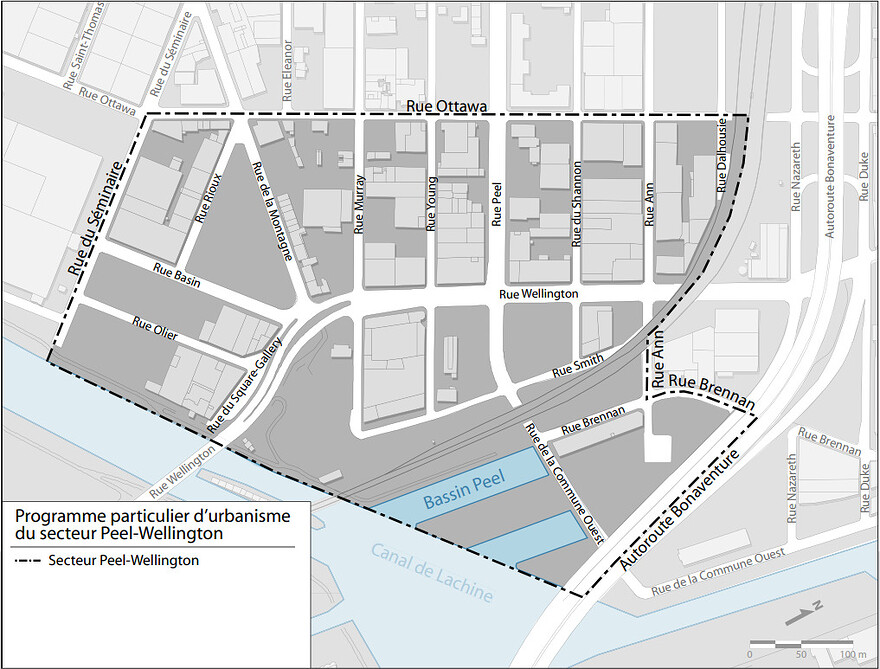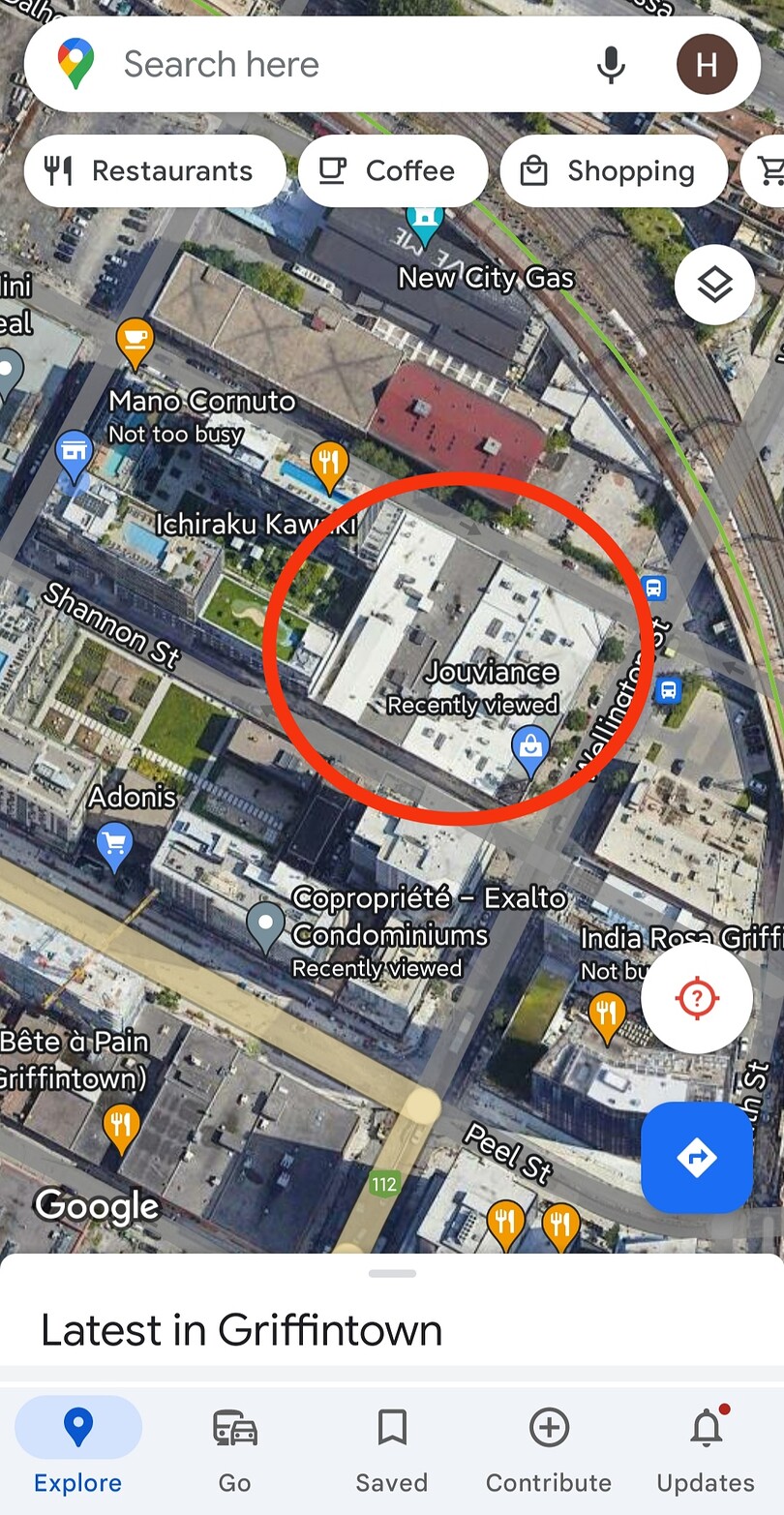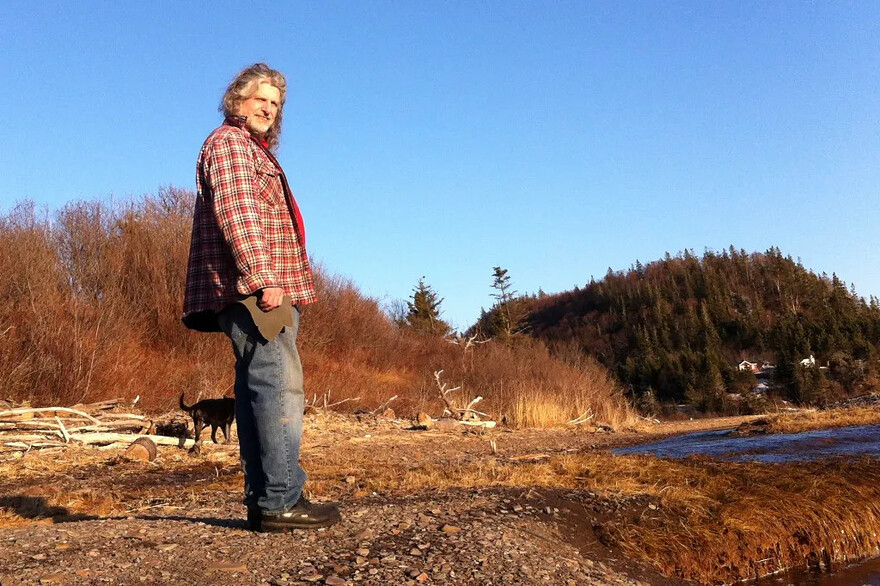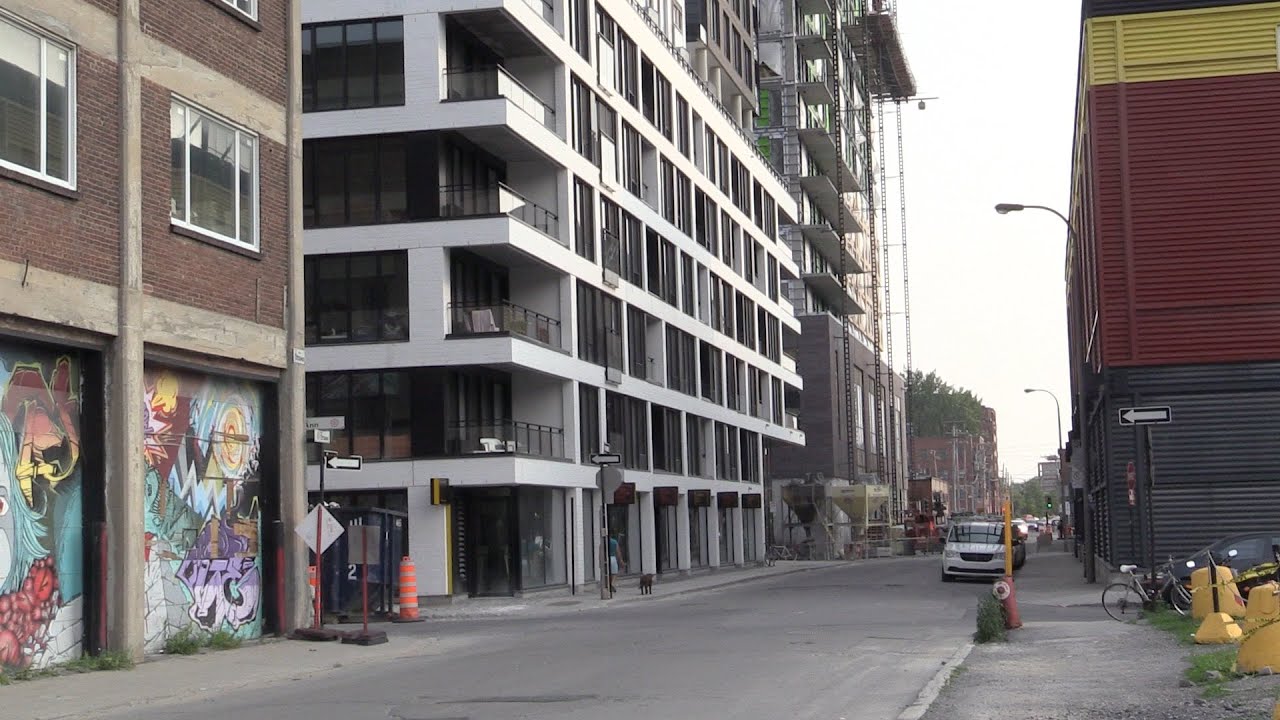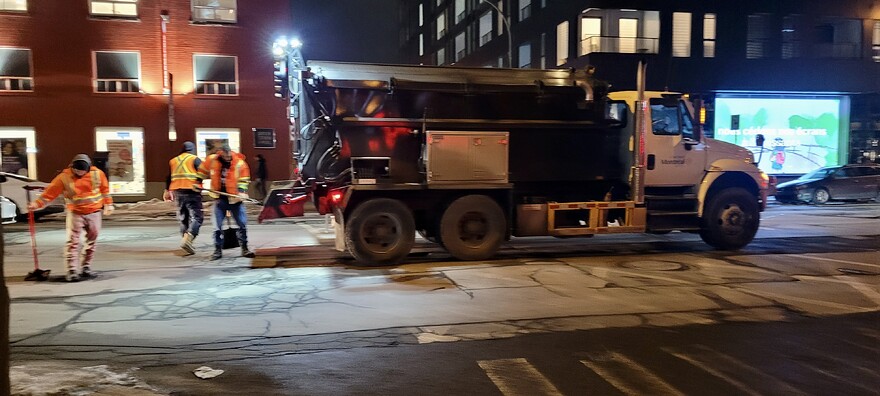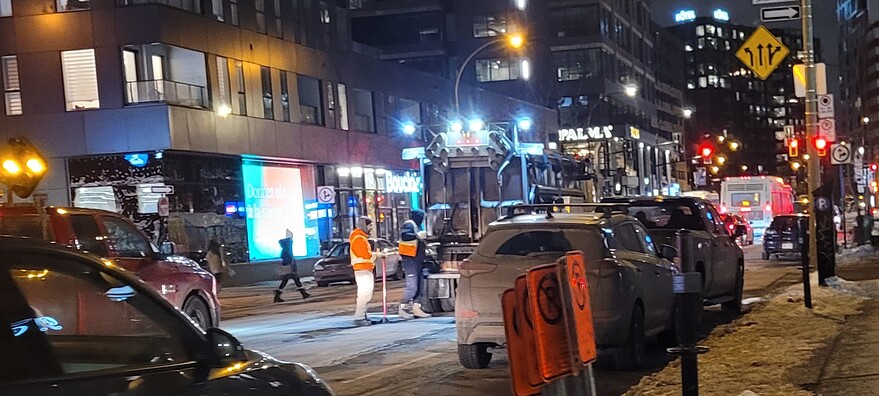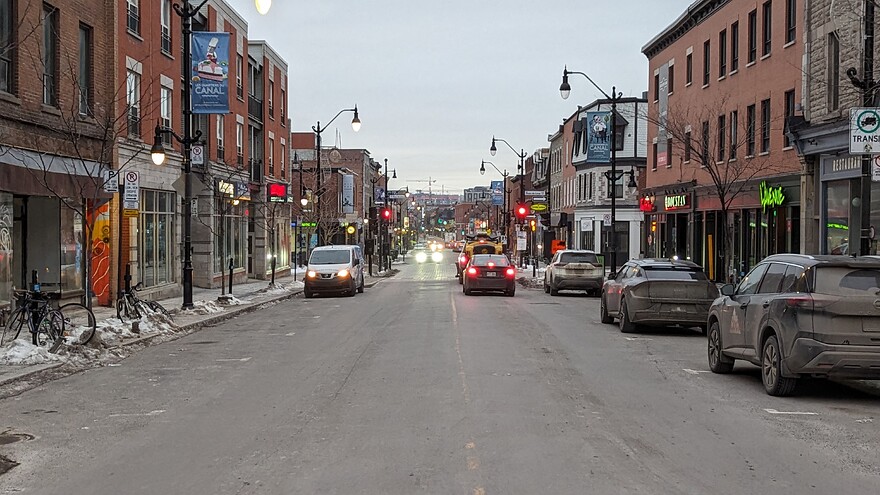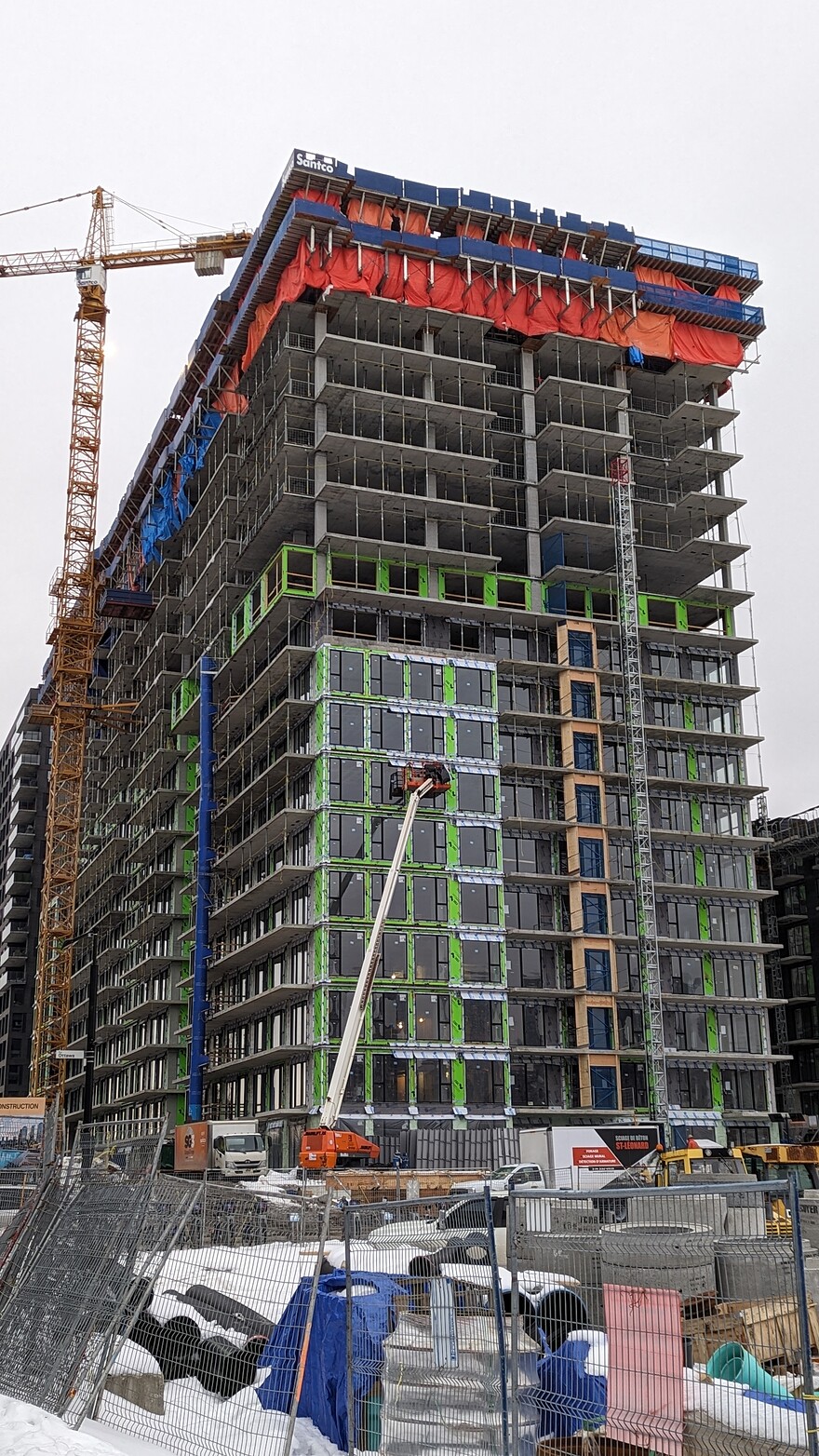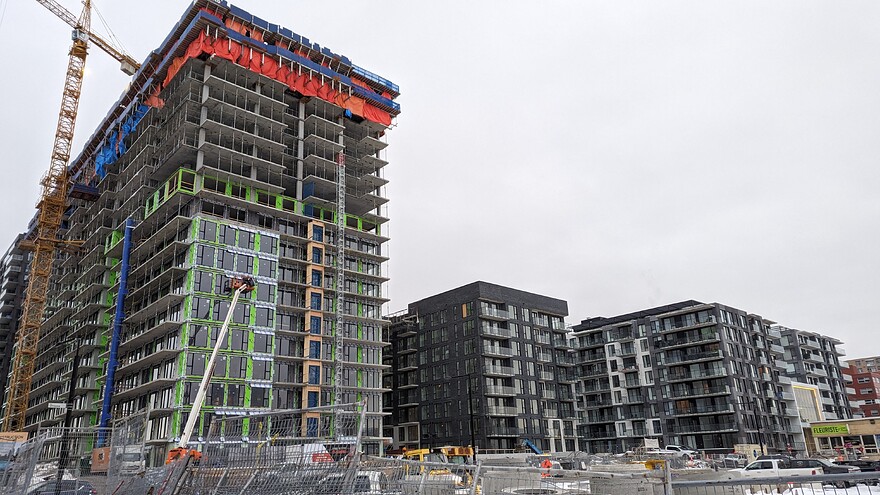Pour les personnes qui suivent le développement de Griffintown depuis les débuts, vous avez sûrement déjà entendu parler de Harvey Lev qui est décédé le 31 décembre dernier
Il y a un texte intéressant sur lui dans le Halifax Examiner. Lui et sa conjointe avaient déménagé il y a quelques années en Nouvelle-Écosse où ils ont acheté et restauré un vieux bureau de poste.
Sa conjointe Judith Bauer avait eu l’idée d’un corridor culturel dans Griffintown en 2011, que MR-63 a ravivé dernièrement.
Remembering Harvey Lev: community activist, character, and mensch
BY PHILIP MOSCOVITCH
JANUARY 24, 2024
Harvey Lev. Credit: Judith Bauer
Last week, I wrote about the Open Mic House, and called it “another little bastion of weirdness” gone. That morning, I had been hoping to also write about Harvey Lev, for two reasons: Like the Open Mic House, he was an original, and it’s exactly the kind of place he valued in cities.
Harvey died on December 31, 2023, in Truro, and asked that his body be donated to Dalhousie for education and research.
I knew Harvey. Not well, but well enough that I wished I’d known him better.
He was a hard to categorize man, but his obituary, published in the Montreal Gazette, captures him nicely:
He was a colourful man who lived his life on his own terms in every way and left indelible marks. He worked hard, carrying on the family legacy, and blazing his own trail. He enjoyed his business life, heritage buildings, his eclectic book collection, and the many colourful people he befriended along the way. All who knew Harvey knew him for his generous spirit.
I first met Harvey several years ago, when we were on holiday in Parrsboro. The old post office building — a massive brick pile which had been empty for decades — now had a sign on the outside advertising a cafe, bookstore, and art gallery. We went in.
The space was, not surprisingly, massive. Thousands and thousands of books lined the walls, stood in piles, snaked through hallways and into a back room. There was a woman — Judith Bauer, Harvey’s partner — working on a Mac, with a couple of dogs lounging on a couch nearby. We ordered (?) coffees, and Judith got up and went over to the kitchen to make them. I put a question mark after “ordered” because the place felt more like being in someone’s somewhat eccentric home than a cafe. I would later learn that the building was, as Harvey’s online bookseller listing said, “open when we are open.”
I started looking through the books, and Judith said they were all from her and Harvey’s personal collection, and they just decided to offer them for sale in case anyone wanted them. Any sales would go towards “keeping the place going.” Looking through the titles, I was immediately struck by one section, which was full of books by somewhat obscure Montreal writers and poets, several of whom I had known.
I did not grow up in the Maritimes, but I’ve heard plenty of stories of people who say when they are travelling in some other part of the country or the world, and they run into a fellow Maritimer, they recognize each other immediately. That’s how I feel about anglo Jewish Montrealers, especially older ones.
So when I saw the books, and then when Harvey appeared, I could figure his background immediately.
In some ways, Harvey reminded me of my (anglo Jewish Montreal) dad: the same iconoclastic streak, the same love of books, the same intolerance for stilted ritual. In a Facebook post, Judith wrote that there would be “no funeral, memorial, or celebration of life. Harvey was very clear on not wanting a bunch of speechifying and all that.”
We drank our coffee, and chatted with Harvey and Judith about how the old post office building, about their plans for holding residencies and art shows, about Montreal, and gentrification, and how they came to be living here by the Bay of Fundy. I was so taken with, and curious about the two of them, that after we left the place, we headed straight for the local library, where I signed up to use one of the computers and tried to find out as much as I could.
Harvey was the owner of a paper business in Montreal; he bought a bunch of buildings in the now thoroughly gentrifying neighbourhood of Griffintown (populated for decades largely by poor Irish immigrants and their descendants). Unlike other business people who buy buildings in gentrifying areas, Harvey wasn’t particularly interested in making a buck on them. Or at least, in making too many bucks. He once told me that in the paper business you need storage space, and buying these solid old brick buildings served several purposes: he could store paper in them, he could save them from being knocked down and turned into generic condo buildings, and he could rent out the space he wasn’t using to artists, at reasonable rates. (I am generally skeptical of people who make these sorts of claims, but I believed Harvey, and I have since met folks connected with artists who rented from him.)
Here he is in a video from 2015, talking about saving and reusing buildings, not only for their own architectural value, but as a way to make urban life more interesting.
New City Gas, which Harvey refers to here, was originally built by the New City Gas Company in 1847. He bought it and turned it into an event space, which, I suspect, was profitable enough that it allowed him to buy up and save other buildings. In the video, Harvey is talking about Griffintown, but he could easily be referring any city in which built heritage is being lost at an alarming rate:
A developer comes along and decides that this is an opportunity to make a lot of money, I guess, and they negotiate with the powers that be at city hall, downtown, and they get everything rezoned for their needs…
Griffintown could have been a Brooklyn — or they have a beautiful warehouse district in New Orleans…. reusing older buildings for social purposes… You get 2,500 people in here on a music night, and they’re dancing, having fun, they’re living. They’re living in their city!… The spaces were inexpensive, and they were still solid, and they didn’t require the $30 or $40 million that is required to build a big building. They only needed a million or $600,000 or something like that to fix. So the rents could have stayed low.
Over subsequent visits to Parrsboro and area, we made sure to visit Harvey and Judith. They invited me to give a workshop on fermenting. Judith co-presented, sharing her techniques for making kefir. On one visit, I noticed some drawings by Montreal artist Armand Tatossian hanging on the wall, and Harvey said, “Oh, do you know Armand? We used to paint together.” (I did not know Armand, but a friend of mine dated his daughter.) I thought, of course Harvey painted with him. Why not?
In 2020, I wrote a piece on Harvey and Judith, and their love of Parrsboro, for Saltscapes. Harvey told me how he came to buy the old post office building in the first place:
Lev and his late long-time partner, chef Esther Hageman, were driving home to Montreal after a Cape Breton vacation when they detoured off the highway near Truro and drove along the shores of the Minas Basin to Parrsboro.
They loved it.
“It’s extraordinarily unique. On any given day, you can walk along these beautiful beaches without encountering a soul,” Lev says. “There’s just something magical about the place.”
For the next several years, Lev and Hageman returned to the town on holiday, and she was curious about the boarded-up old post office. Him? Not so much. Lev owns a paper business in Montreal, and over the years he had bought, “10 or 12 heritage or semi-heritage buildings” in the city. He had no interest in another one, especially one so far from home.
Eventually though, Lev bowed and agreed to look at the place. He was not impressed. “It was in dismal shape. It had been boarded up for 43 years… There were seven buckets collecting the rain. There was no electricity, no plumbing. It was completely empty, and it looked like it was too far gone.”
They put the idea aside. Hageman, at this point, had been living with cancer for several years. Lev recalls that during chemo treatments she could sleep 13 or 14 hours a day. One day, he looked over at her while she slept, “And I thought, you know what? I’m going to call this guy up and see what he wants for the building.”
The last time (I think) that I saw Harvey was when he and Judith invited us to visit them at a property Harvey had bought along the Bay of Fundy, outside Parrsboro. It was spectacular: hundreds of acres, beachfront, a gorgeous, natural, wild spot about as far from Griffintown as you can get. Judith and Harvey were camping on the property, and had spent most of the summer there.
There was no road down to their site, so we drove in partway, then got out and started hiking. We weren’t sure if we were going the right way, but then we saw a pickup with a licence plate that said, “Zaide” — the Yiddish word for grandfather. OK, this had to be Harvey’s truck. (You can spell “zaide” a few different ways, and I’m not sure which spelling was on the plate.) Then we passed a field full of sculptures made out of junk parts. Again, this was Harvey’s work, so we had to be on the right track. Finally, we made it down to the water, and went for a walk along the beach, dogs running ahead and sniffing everything. Harvey said the longtime owner of the land had died, and he bought it because he was worried it would get subdivided and developed into fancy cottages. When we asked about the sale price, he said, “It cost less than a shit condo in Montreal.”
The guy was a character and a mensch. You don’t run into too many of these types in your life, and when you do, make sure to appreciate them.
